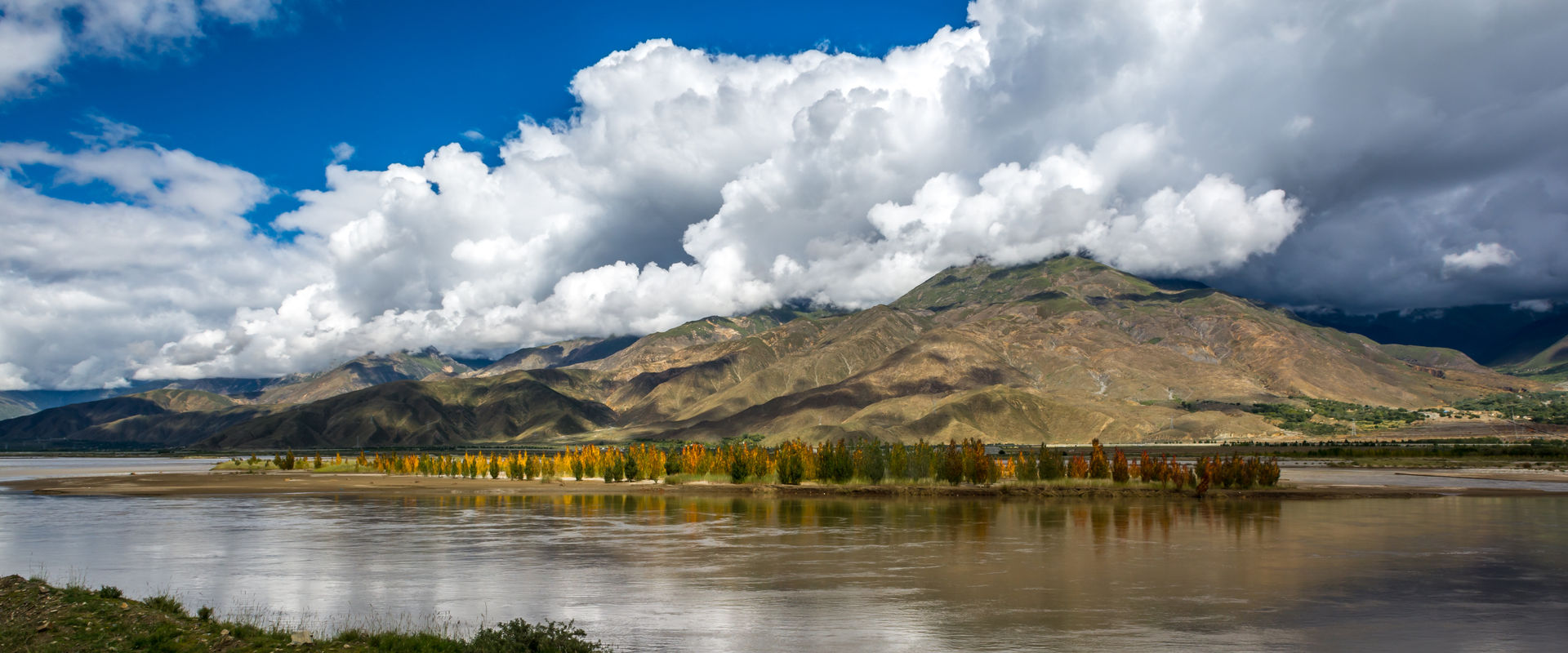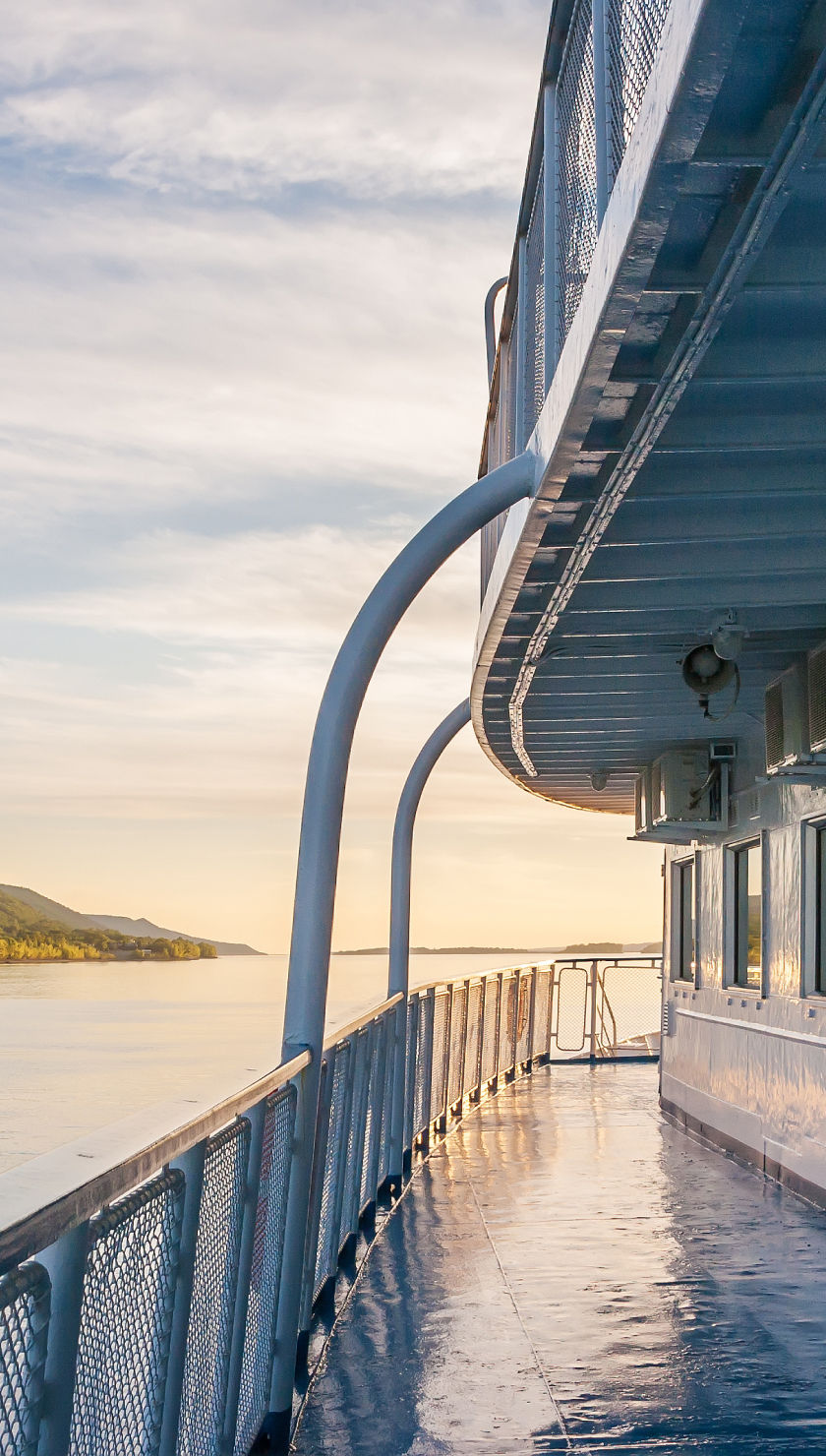Brahmaputra: Journey Through the Soul of Assam and Beyond
From the UNESCO-listed Kaziranga National Park to the serene island monasteries of Majuli, the river unveils a tapestry of stories told through sacred architecture, bustling markets, tribal villages, and the songs of migratory birds. Its waters are as much a lifeline as they are a legend—carrying centuries of trade, conquest, and cultural exchange.
Onboard a modern, well-appointed river vessel, you’ll experience a blend of relaxation and adventure. Each day brings a new horizon: misty mornings with views of the Himalayas, afternoons exploring Assamese cuisine and crafts, and evenings under star-strewn skies. Whether you seek wildlife encounters, historical exploration, or serene moments on deck, the Brahmaputra promises a journey unlike any other.
The Brahmaputra River – A Living Artery of Culture and Nature
The Brahmaputra, known in Tibet as the Yarlung Tsangpo, is among the world’s few rivers to cross three countries: China, India, and Bangladesh. In Assam, it becomes the heart of the region, wide, powerful, and ever-shifting with the seasons. This unique waterway is lined with tea estates, bamboo groves, bustling ghats, and fishing villages, making it an immersive corridor into local life.
Kaziranga National Park
Cruises often include excursions to Kaziranga National Park, famed for its population of the one-horned rhinoceros. Here, jeep or elephant safaris reveal wild landscapes where elephants, swamp deer, and tigers roam freely. Birdlife is equally remarkable, with storks, pelicans, and hornbills filling the skies. The park’s proximity to the river means wildlife sightings can even occur from the ship’s deck.
Majuli Island
The world’s largest river island, Majuli, is a cultural heartland of Assam. Known for its centuries-old Vaishnavite monasteries (satras), Majuli is a center for traditional dance, mask-making, and religious art. Visiting its monasteries offers insight into an unbroken spiritual tradition, while its rural beauty—rice paddies, water meadows, and stilted bamboo homes—invites slow exploration.
Guwahati
Often the starting or ending point for Brahmaputra cruises, Guwahati blends urban vibrancy with sacred heritage. Highlights include the hilltop Kamakhya Temple, riverfront markets, and cultural performances showcasing Assamese dance and music. A sunset cruise past Peacock Island offers stunning views of the city skyline against the wide expanse of the Brahmaputra.
Sibsagar
Once the capital of the Ahom Kingdom, Sibsagar is dotted with grand temples, palaces, and tanks (artificial lakes). The 18th-century Rang Ghar, Asia’s oldest amphitheater, and the vast Sivadol temple are standout attractions. Cruising near Sibsagar immerses travelers in the legacy of Assam’s warrior-kings and their distinctive architectural style.
Peacock Island
One of the smallest inhabited river islands in the world, Peacock Island is home to the Umananda Temple and the endangered golden langur. Accessible by tender boats from larger cruise vessels, it’s a peaceful stop where mythology, wildlife, and scenic views meet.
Bishwanath Ghat
This charming river port is known as the “Cultural Capital of Assam” for its centuries-old temples and lively markets. Visiting Bishwanath Ghat offers a chance to see traditional boatbuilding, sample local sweets, and witness riverbank life where fishermen mend nets and traders bargain over tea leaves and spices.
Jorhat
Surrounded by lush tea estates, Jorhat is a gateway to Majuli and a center for Assamese tea culture. Visits here often include tours of colonial-era tea bungalows, tasting sessions, and walks through emerald plantations. The air is perfumed with the scent of fresh tea leaves and the hum of cicadas.
Neamati Ghat
A common embarkation or disembarkation point, Neamati Ghat is the starting point for journeys to Majuli and Sibsagar. Its busy waterfront is a living illustration of the Brahmaputra’s role as a trade and transport artery.
Jute Mill
Near Guwahati, excursions to a working Jute Mill reveal the production process behind one of Assam’s most important exports. The rhythmic hum of looms and the earthy scent of raw fiber connect visitors to a heritage industry that still shapes local livelihoods.
Manas National Park
Situated at the Himalayan foothills along the Bhutan border, Manas National Park is a UNESCO World Heritage site and tiger reserve. While not all cruises reach this far, special itineraries include jeep safaris to see elephants, buffalo, leopards, and rare pygmy hogs in pristine wilderness.
Mishing Village
Mishing Village offers a close-up look at the traditions of Assam’s Mishing people. Their stilted bamboo homes rise above the floodplain, a practical design shaped by the Brahmaputra’s seasonal floods. Visitors can watch skilled weavers create shawls and garments in earthy tones, enjoy local fish curry with black sesame, and sip homemade rice beer. Folklore, music, and dance remain central to village life, offering a warm, authentic connection to the river’s cultural heritage.
Dungar Ghat
Peaceful and scenic, Dungar Ghat is a quiet riverside stop where wide sandbanks meet shimmering waters. Fishermen cast nets, children play along the shore, and women wash clothes in the shallows. At certain times, small fairs and religious gatherings add a splash of color and sound. For cruise guests, it’s a gentle interlude—ideal for photography, river walks, and soaking in the calm beauty of the Brahmaputra.
Sualkuchi
Known as the “Manchester of the East,” Sualkuchi is Assam’s silk-weaving hub, producing prized Muga, Eri, and Pat silk. The hum of looms fills the air as artisans handcraft shimmering textiles with motifs inspired by nature and myth. Visitors can see the weaving process, shop for authentic silk sarees and scarves, and stroll along the riverbank. Sualkuchi is a must-visit for anyone seeking Assamese artistry at its finest.
Bangla Village
Bangla Village blends Assamese and Bengali traditions in a picturesque riverside setting. Coconut palms and banana groves shade wooden houses, while the aroma of spiced fish curry and sweet pithas drifts from kitchens. Locals craft bamboo and cane goods, and harvest festivals bring the community alive with music and dance. It’s a welcoming stop that reflects the rich cultural mix of the Brahmaputra Valley.
Unique Aspects of Cruising the Brahmaputra
- Wildlife Encounters: Spot elephants, dolphins, rhinos, and a kaleidoscope of bird species.
- Cultural Immersion: Meet local communities, attend folk performances, and explore sacred temples.
- Culinary Journeys: Enjoy Assamese cuisine rich in fish, bamboo shoots, mustard greens, and aromatic spices.
- Seasonal Scenery: Witness the river’s changing moods—from monsoon swells to golden winter sunsets.
Themed and Length-Based Itineraries
Short Cruises (3–5 Days)
Ideal for travelers with limited time, these itineraries focus on specific highlights such as Kaziranga National Park, Majuli Island, and Guwahati. Expect morning safaris, guided temple tours, and relaxed afternoons on deck with panoramic views.
Medium Cruises (6–9 Days)
Covering a broader stretch of the Brahmaputra, medium-length cruises often combine wildlife, culture, and village visits. Guests might explore Bishwanath Ghat, enjoy tea tastings in Jorhat, and witness artisan mask-making in Majuli. Evenings bring onboard lectures and folk dance performances.
Long Cruises (10+ Days)
For a deep immersion, extended journeys trace the river’s full Assamese course. These itineraries may include both Kaziranga and Manas National Parks, along with multiple island and heritage stops. Time ashore allows for market visits, cooking classes, and photography expeditions.
Special Interest Cruises
- Wildlife Safaris: Focus on Kaziranga and Manas with expert naturalists.
- Cultural Heritage: Dive into Assamese art, music, and monastic traditions.
- Culinary Voyages: Join cooking classes, market tours, and tea estate visits.
- Festival Cruises: Align with events like Bihu to experience vibrant celebrations.
Onboard Experience
Ship Sizes and Ambiance
Brahmaputra cruise vessels range from intimate boutique ships carrying just 12 guests to larger, luxurious river cruisers. Interiors blend modern comfort with Assamese accents—think handwoven textiles, teakwood furnishings, and open-air observation decks for wildlife viewing.
Cuisine and Wine
Dining onboard showcases Assamese flavors alongside continental classics. Fresh fish from the river, fragrant rice varieties, and locally sourced vegetables feature prominently. Some ships offer Indian wine selections and themed dinners inspired by regional cuisine.
Excursions and Enrichment
Daily shore excursions bring the destinations to life: jeep safaris, guided temple visits, village walks, and craft demonstrations. Onboard enrichment might include talks by historians, wildlife experts, and cultural performers.
Something for Everyone
- Couples: Romantic sunset views, private balconies, and serene itineraries.
- Families: Educational wildlife trips and engaging cultural experiences.
- Solo Travelers: Small group settings that foster connection and exploration.
- Luxury Seekers: High-end accommodations, personalized service, and curated excursions.
“A Brahmaputra River cruise is not just a voyage—it’s an intimate encounter with one of the world’s last great untamed rivers. Here, every bend reveals a new story, every breeze carries the scent of tea and rain, and every sunrise feels like a personal invitation to explore.”











